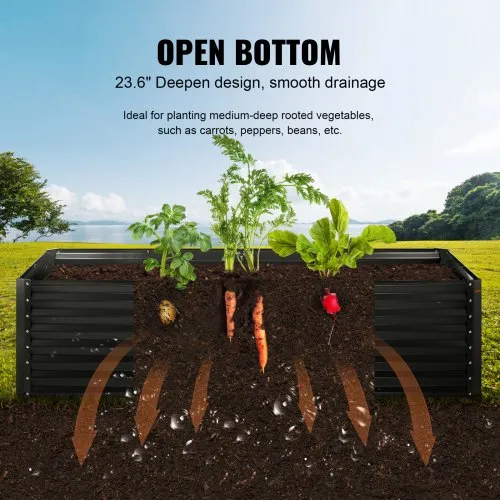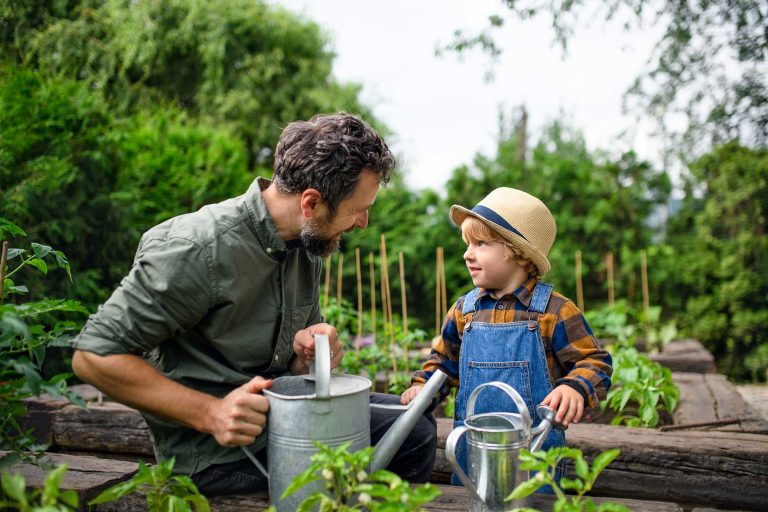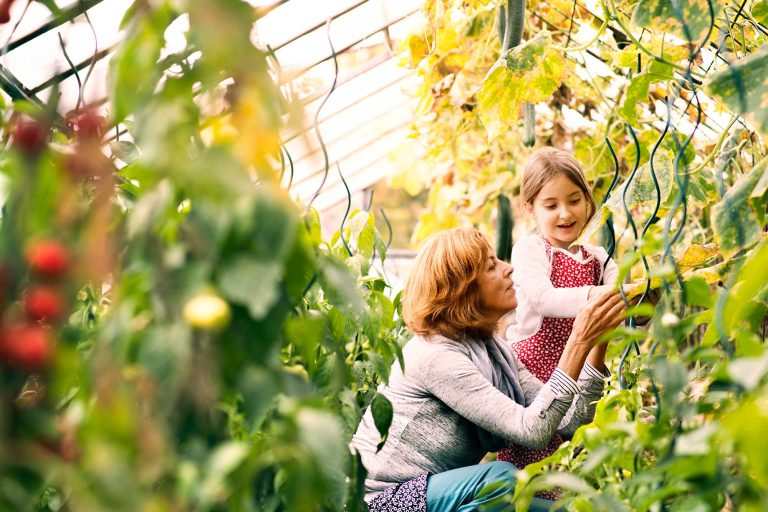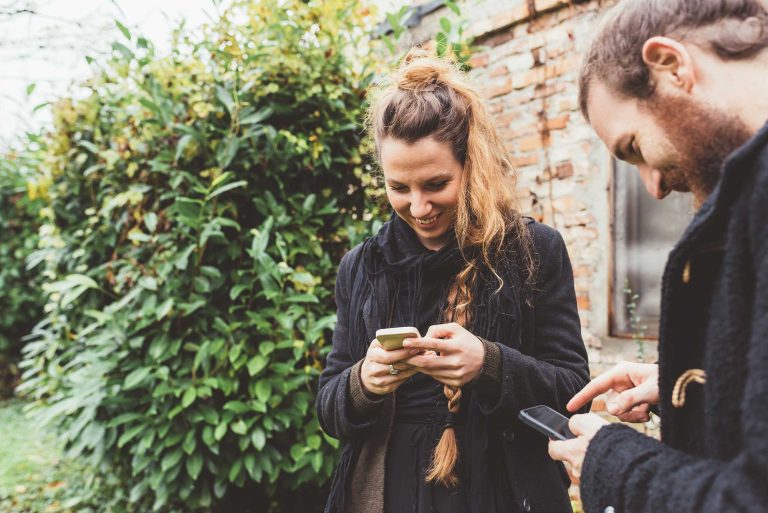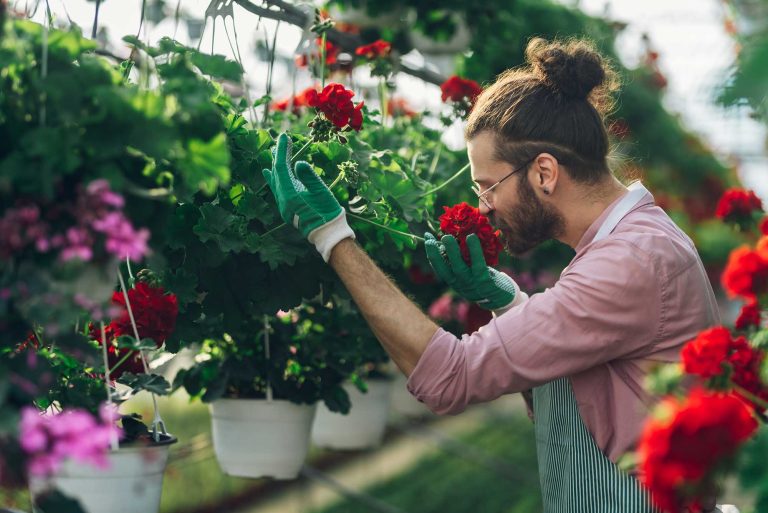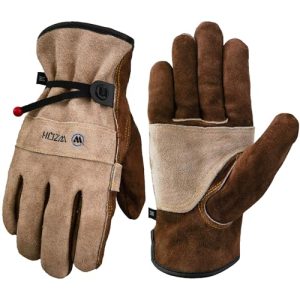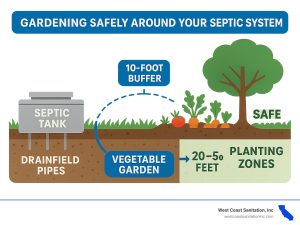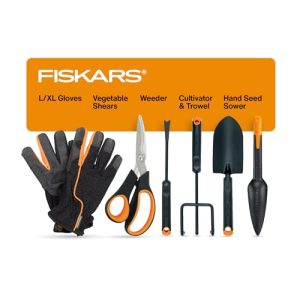Imagine strolling through your garden, the sun warming your face, as you admire the vibrant colors and textures of your plants. You’ve worked hard to create this peaceful oasis, but there’s one question that keeps popping up: “How deep should a garden planter box be?”
You’re not alone in wondering about this crucial aspect of gardening. The depth of your planter box can make or break the health and growth of your plants. It’s like choosing the right pair of shoes; too tight or too loose, and the discomfort is inevitable.
You’ll discover the ideal depths for various plants, ensuring your garden thrives beautifully. Stick around, because getting this right could transform your gardening success and bring your green dreams to life.
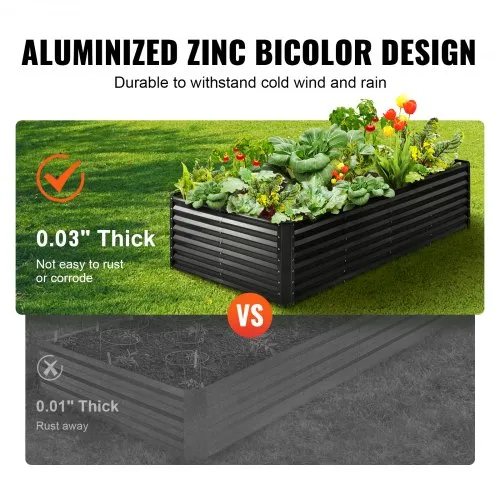
Credit: www.vevor.com
Choosing The Right Depth
Choosing the right depth for a garden planter box impacts plant growth. Vegetables and flowers thrive in boxes 12-18 inches deep. Shallow herbs need only about 6 inches.
Choosing the Right Depth When planning your garden, the depth of your planter box can make or break your plant’s health and productivity. Picking the right depth isn’t just about aesthetics; it’s about ensuring your plants have enough room to thrive. So, how do you decide the optimal depth for your planter box?Consider Plant Types
Different plants have different needs. Vegetables like carrots or potatoes require deeper planter boxes, often over 12 inches, to allow their roots to develop properly. On the other hand, herbs like basil or cilantro can flourish in shallower boxes, around 6 to 8 inches deep. Understanding the specific requirements of each plant type you intend to grow is crucial.Impact Of Root Systems
Root systems vary greatly among plant species. Some plants have extensive, deep roots, while others have shallow, fibrous ones. Think about tomatoes or peppers—these have deeper root systems and need more space to stretch. If your planter box is too shallow, it might stunt growth or lead to root-bound plants. Have you noticed that plants with ample root space tend to be healthier and more productive?Common Depth Guidelines
For most small to medium-sized plants, a depth of 8 to 12 inches is generally sufficient. However, for larger plants or those with deep roots, consider extending the depth to 18 inches or more. Remember, the deeper the planter box, the more soil it can hold, and the better it can retain moisture. It’s always better to err on the side of giving your plants a bit more space than less. After all, a thriving garden starts with a solid foundation.Factors Influencing Depth
Determining the depth of your garden planter box involves several crucial factors. Each aspect plays a significant role in ensuring your plants thrive. Let’s explore these influential factors.
Soil Type And Quality
Different soil types require different planter depths. Sandy soil drains quickly, needing deeper boxes for water retention. Clay soil holds water well, allowing shallower boxes. Quality soil is essential for plant health. Rich, nutrient-filled soil supports root growth in any depth.
Climate And Weather Conditions
Climate impacts planter box depth. Hot, dry regions benefit from deeper boxes. They retain moisture longer, protecting plants during heatwaves. In cooler, wetter climates, shallower boxes prevent waterlogging. They ensure roots get enough oxygen.
Space And Location Constraints
Space limits influence box depth. Small areas might require shallower boxes. They fit better in compact spaces. Location matters too. On balconies, lighter and shallower boxes are ideal. They prevent structural stress. Ensure your box suits the available space and location.
Benefits Of Proper Depth
Proper depth in a garden planter box allows roots to grow strong and healthy. This ensures better plant growth and increased yield. Adequate depth also helps in water retention, keeping plants hydrated longer.
Proper depth in garden planter boxes is more than just a matter of aesthetics. It plays a crucial role in the thriving of your plants, ensuring they not only survive but truly flourish. Let’s dive into the specific benefits of getting the depth just right.Improved Plant Health
A planter box with the right depth allows roots to grow freely and establish a strong foundation. This foundation is vital for absorbing nutrients effectively. When I first started gardening, I underestimated this and saw stunted growth and weak plants. You want your plants to reach their full potential, right? When roots are cramped, they struggle to access the nutrients they need, leading to poor plant health. The right depth helps avoid this issue, ensuring your plants look vibrant and lush.Enhanced Growth Potential
The depth of a planter box directly influences how tall and robust your plants can grow. With ample space, plants can develop more extensive root systems. This translates to better support and more vigorous growth above the soil. Imagine planting tomatoes in a shallow box and watching them topple over because their roots can’t anchor effectively. Give them room to grow, and you’ll see the difference in their stature and fruit production.Efficient Water Usage
Deeper planter boxes help in retaining moisture more effectively. This means less frequent watering and less risk of waterlogging. You save time and water while maintaining a healthy environment for your plants. Have you ever noticed how quickly shallow boxes dry out? This leads to frequent watering, which isn’t always practical. A well-sized planter box ensures water reaches the roots without pooling, offering a balanced hydration strategy. These benefits make clear that paying attention to planter box depth is worth your while. How will you adjust your gardening practices to ensure your plants thrive?
Credit: www.facebook.com
Adjusting Depth For Different Plants
The right depth for a garden planter box depends on the plants you grow. Vegetables like carrots need 12 inches, while herbs like basil thrive in 6 inches. Adequate depth helps roots spread and access nutrients.
Adjusting the depth of your garden planter box can significantly impact the growth and health of your plants. Different plants have varying root structures, which dictate how deep their planter boxes should be. Understanding these requirements can help you create a thriving garden tailored to your plants’ needs.Vegetable Planter Boxes
Vegetables often require deeper planter boxes due to their extensive root systems. For instance, tomatoes and carrots thrive in boxes that are at least 12-18 inches deep. This depth allows roots to spread out and access nutrients effectively. Consider your favorite vegetables and plan accordingly. Root depth not only supports growth but also affects yield. A deeper box can lead to more robust plants and, ultimately, a more bountiful harvest.Herb And Flower Boxes
Herbs and flowers typically need less depth compared to vegetables. A depth of 6-12 inches is generally sufficient for most herbs like basil and thyme. These plants have shallower root systems, making them perfect for smaller spaces and balcony gardens. Flowers, depending on the variety, may need similar depths. For instance, marigolds and pansies can flourish in shallow boxes, enhancing your garden’s aesthetics without demanding much space.Trees And Shrubs Considerations
Trees and shrubs require a completely different approach. Their planter boxes should be considerably deeper, often exceeding 24 inches. This depth supports the expansive root systems of these larger plants. If you’re adding trees or shrubs to your garden, check the specific needs of the species. Some may even require deeper settings or need to be planted directly into the ground for optimal growth. Think about the long-term impact on your garden space. How will these larger plants affect the layout and sunlight exposure for other areas? Adjusting depth based on plant type is not just about immediate growth; it’s about planning for your garden’s future.Expert Tips For Optimal Depth
Determining the ideal depth for a garden planter box depends on plant type. Vegetables like carrots need 12 inches, while herbs thrive in 6 inches. Ensuring proper depth enhances plant growth and soil drainage, maximizing gardening success.
Garden planter boxes are a wonderful way to grow plants, especially in limited spaces. The depth of the planter box is crucial for the health and growth of your plants. Getting this right ensures that roots have enough space to develop. It also impacts water drainage and soil quality. Here are expert tips to determine the optimal depth for your garden planter box.Consulting Gardening Experts
Gardening experts offer valuable advice on planter box depth. They understand different plants require varying root space. Talk to local experts who know the soil and climate conditions. They provide insights tailored to your region. Their tips help you choose the right depth for different plant types.Using Depth Calculators
Depth calculators are tools that simplify gardening. They help you decide on the depth based on plant type and planter size. Input the plant’s needs and get an estimated depth. Many online calculators are free and easy to use. They offer a quick guide to optimal planter box depth.Trial And Error Approach
Sometimes, experimentation works best. Start with a basic depth and observe plant growth. Adjust the depth based on your observations. This method helps learn what works in your specific environment. It involves patience but offers valuable hands-on experience. Adjusting over time can lead to better plant health.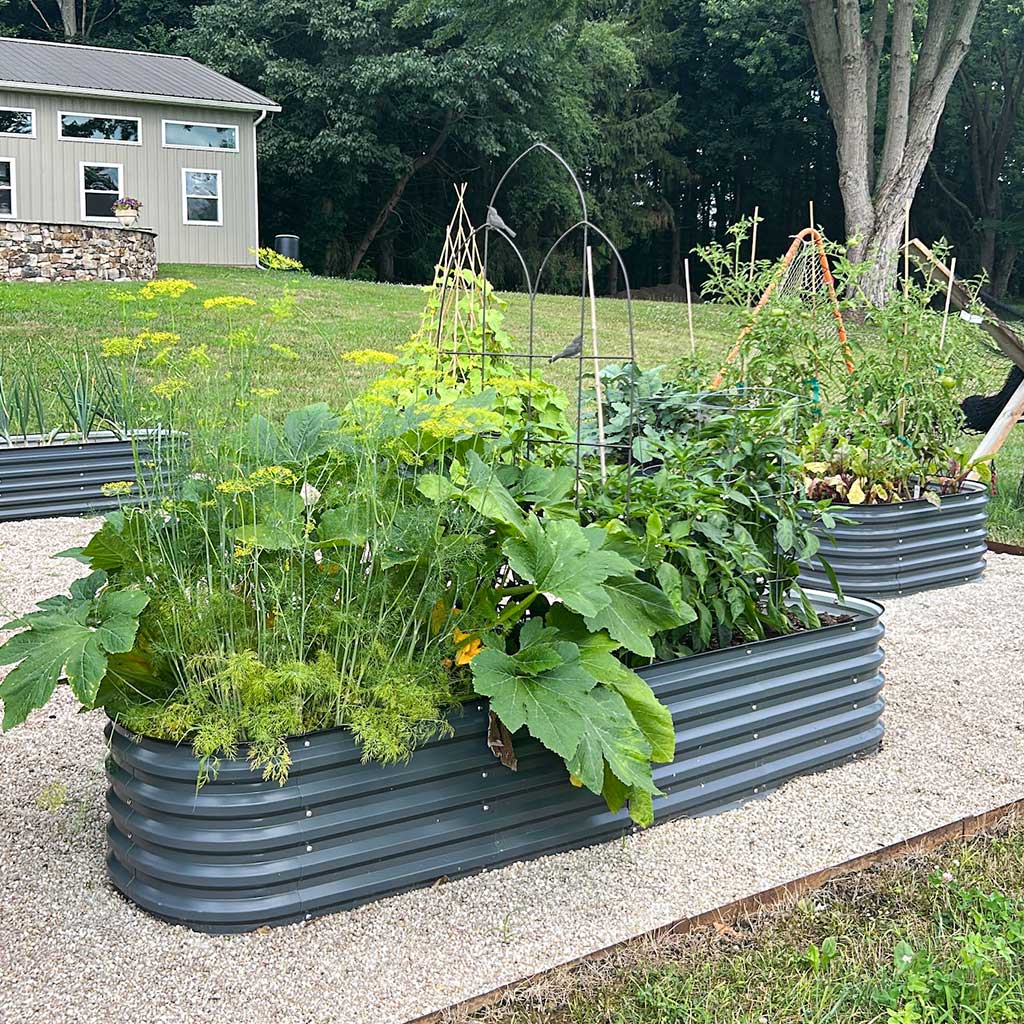
Credit: www.vegega.com
Maintaining Planter Box Depth
Garden planter boxes should be 6 to 12 inches deep for most plants. This depth supports healthy root growth and nutrient absorption. Adjust depth based on specific plant needs for optimal growth.
Maintaining the right depth for your garden planter box is crucial for healthy plant growth. A well-maintained depth ensures that roots have enough room to expand, access nutrients, and stay adequately drained. Let’s explore some practical steps to keep your planter box depth optimal, ensuring your plants thrive.Regular Soil Checks
Make a habit of checking the soil depth regularly. Use a simple ruler or a garden tool to measure. This helps you identify any soil settling or compaction that might limit root growth. If you’ve added new plants, ensure the soil hasn’t been displaced. It’s surprising how much soil can shift after a good watering or a heavy rain. Being proactive with soil checks can save you from future headaches and sad-looking plants.Seasonal Adjustments
Adjust the soil depth with the seasons. In spring, consider adding fresh compost or soil to replenish nutrients lost over winter. Summer may require more frequent checks due to faster growth and water evaporation. Add mulch to retain moisture and maintain depth. In fall, prepare for colder months by ensuring the soil is not too compacted, allowing for proper drainage and root protection.Avoiding Common Mistakes
One common error is overfilling the planter box. Leave space for watering to avoid runoff and ensure water reaches the roots. Another mistake is not accounting for plant growth. As plants mature, roots expand and need more room, so ensure your initial depth allows for this expansion. Finally, don’t forget about drainage. Without adequate drainage, water can pool, leading to root rot and plant failure. By maintaining the right depth and avoiding these pitfalls, you can create a thriving, beautiful garden that’s the envy of your neighborhood. Are you ready to roll up your sleeves and ensure your planter boxes are in top shape?Frequently Asked Questions
How Deep Should Planter Boxes Be For Vegetables?
Vegetable planter boxes should be at least 12-18 inches deep. This depth allows for proper root growth and nutrient absorption. Deep planter boxes help retain moisture and support healthy plant development. Adequate depth ensures vegetables can thrive and produce bountiful yields.
What Is The Ideal Depth For Flower Planter Boxes?
Flower planter boxes typically need a depth of 8-12 inches. This depth provides enough space for root expansion and nutrient uptake. It supports vibrant blooming and healthy growth. Ensuring the correct depth helps flowers flourish and enhances garden aesthetics.
Can Planter Box Depth Affect Plant Growth?
Yes, planter box depth significantly impacts plant growth. Shallow boxes limit root development, leading to stunted growth. Adequate depth facilitates nutrient access and moisture retention. Choosing the right depth ensures plants grow robustly and produce desired results.
How Does Planter Box Depth Influence Drainage?
Proper depth enhances drainage by allowing excess water to flow away. Deep planter boxes prevent waterlogging, reducing root rot risk. Good drainage ensures healthy plant growth and prevents soil compaction. Selecting appropriate depth is crucial for optimal drainage.
Conclusion
Choosing the right depth for your garden planter box matters. It supports strong plant roots. Most veggies need 12 to 18 inches deep. Herbs and flowers do well in shallower boxes. Consider plant type before picking the depth. Soil quality also plays a role.
Rich soil helps plants thrive even in shallow boxes. Always plan your garden with care. This ensures healthy growth and a bountiful harvest. Happy gardening!
